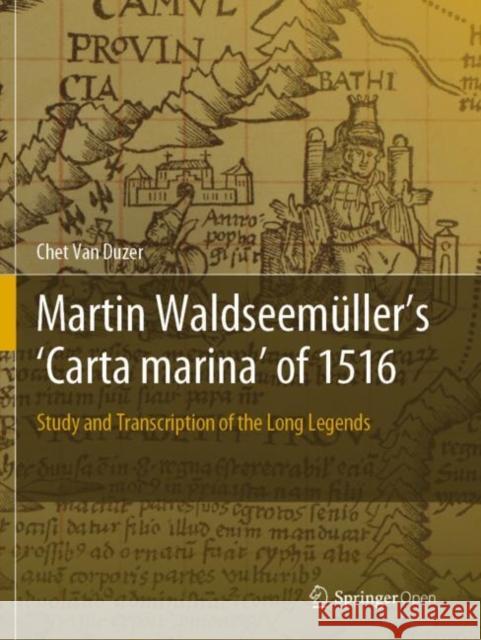Martin Waldseemüller's 'Carta Marina' of 1516: Study and Transcription of the Long Legends » książka
topmenu
Martin Waldseemüller's 'Carta Marina' of 1516: Study and Transcription of the Long Legends
ISBN-13: 9783030227050 / Angielski / Miękka / 2020 / 150 str.
Martin Waldseemüller's 'Carta Marina' of 1516: Study and Transcription of the Long Legends
ISBN-13: 9783030227050 / Angielski / Miękka / 2020 / 150 str.
cena 201,24
(netto: 191,66 VAT: 5%)
Najniższa cena z 30 dni: 192,74
(netto: 191,66 VAT: 5%)
Najniższa cena z 30 dni: 192,74
Termin realizacji zamówienia:
ok. 22 dni roboczych
Bez gwarancji dostawy przed świętami
ok. 22 dni roboczych
Bez gwarancji dostawy przed świętami
Darmowa dostawa!
This open access book presents the first detailed study of one of the most important masterpieces of Renaissance cartography, Martin Waldseemüller’s Carta marina of 1516. By transcribing, translating into English, and detailing the sources of all of the descriptive texts on the map, as well as the sources of many of the images, the book makes the map available to scholars in a wholly unprecedented way.
In addition, the book provides revealing insights into how Waldseemüller went about making the map -- information that can’t be found in any other source. The Carta marina is the result of Waldseemüller’s radical re-evaluation of what a world map should be; he essentially started from scratch when he created it, rejecting the Ptolemaic model and other sources he had used in creating his 1507 map, and added more descriptive texts and a wealth of illustrations.
Given its content, the book offers an essential reference work not only on this map, but also for anyone working in sixteenth-century European cartography.











